
PUMPA - SMART LEARNING
எங்கள் ஆசிரியர்களுடன் 1-ஆன்-1 ஆலோசனை நேரத்தைப் பெறுங்கள். டாப்பர் ஆவதற்கு நாங்கள் பயிற்சி அளிப்போம்
Book Free DemoWhat happens if you leave a broken coconut out in the open for a week? It will deteriorate. You may have noticed that there are greyish white patches over the white of the coconut. When you look at these patches with a magnifying glass, you will notice tiny black rounded structures. These are fungi, which are a type of microorganism. These are referred to as microorganisms because they cannot be seen with our naked eye. Some microorganisms are only seen through a microscope.
Microorganisms
Activity: Microorganisms in soil and pond water:
By performing the following experiment, we can see that microorganisms are present everywhere.
Procedure:
- Label two beakers with the letters 'A' and 'B'.
- Collect some moist soil from the field and mix it with some water in beaker 'A'.
- Take another beaker 'B' and fill it with pond water.
- Observe a drop of each sample on a separate glass slide after the soil particles have settled.
- With the guidance of your teacher, examine each glass slide under the microscope one by one.
Observation: Tiny organisms would be moving and floating around. This demonstrates that microorganisms can be found in soil and pond water.
In our day to day life, we come across different kinds of plants and animals. The size and shape of all living organisms vary. Elephants and blue whales are examples of giant living beings, while mosquitos and rats are examples of small living beings. Some species are so tiny that the naked eye cannot even see them. Microorganisms (Greek, mikros: small, organismos: organism) fall under this category.
A single-cell organism that cannot be seen by the naked eye and can only be seen through the microscope is called microorganisms.
What is Microbiology?
The word microbiology derived from Greek (mikros - small, bios - life-bearing, logy - study). It is a branch of biology that deals with living organisms of microscopic size, including bacteria, fungi, algae, protozoa and viruses, collectively known as 'microbes'.
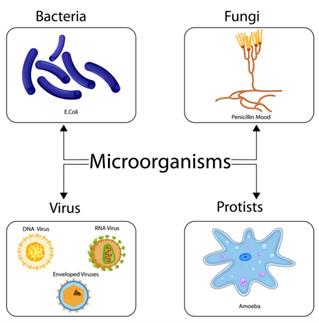
Types of microorganisms
Where are microorganisms found?
Microorganisms can be present in almost any environment. They can be found on both a moist slice of bread and a log of wood. They can also be found on the bodies of plants, livestock, and humans.
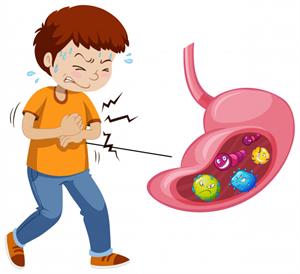
A person suffering from stomach ache due to the effects of harmful microorganisms
In what types of conditions and environment microbes live?
Microbes are present in habitats such as terrestrial, aquatic, atmospheric or living hosts. They can survive under different climatic environments, ranging from ice cold climate to hot springs, water bodies with the high salt condition and low oxygen, dry places with limited water availability, and deserts to marshy, muddy lands.
Characteristics of microorganisms:
Microorganisms have a few common characteristics such as,
- Microbes are ubiquitous and extremophiles, living in harsh environments where no other life-form could survive.
- Many microorganisms have a unicellular structure, and they are made up of just one cell. Some times they live alone (E.g. Amoeba and Paramecium). Sometimes, several microbes found together in clusters called colonies (bacteria and fungi).
- Microorganisms develop a hard outer covering around themselves called a cyst when the atmosphere appears to be unsuitable for life. Within the cyst, they remain dormant (inactive) until they find a suitable environment to survive.
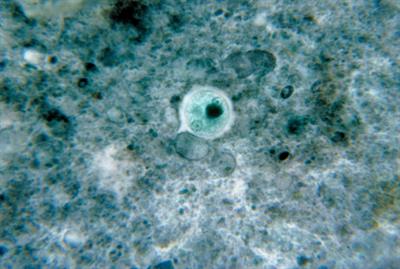
Cyst stage of Entamoeba histolytica
Microbes are
- Unicellular (e.g. Bacteria as Escherichia coli and protozoa like Entamoeba coli)
- Multicellular (Algae and Fungi)
- Acellular (not composed of cells-Virus)
Unicellular organism ("uni" means "one"):
Organisms consist of a single cell, meaning all life processes such as reproduction, feeding, digestion, and excretion, occur in one cell.
Example:
All kinds of bacteria, viruses, amoeba, paramecium, and some kind of fungi such as yeast.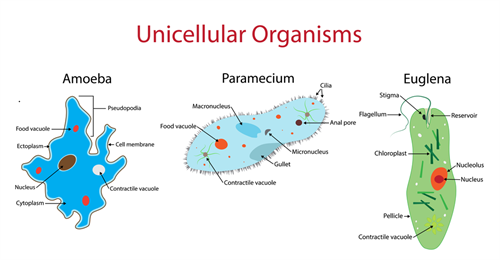

Multicellular organism ("multi" means "more than one"):
Multicellular microorganisms have many cells to carry out the necessary functions of the microorganisms. .
Example:
Almost all animal and plant species and the majority of fungi and algae are multicellular.
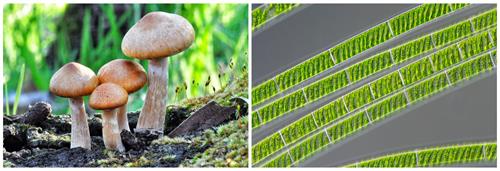
Left to right : Fungi and algae
Antonie Van Leeuwenhoek, the first microbiologist designed his own microscope. In \(1674\), he took plaque from his own teeth and observed it under the microscope. He was astonished to see many tiny organisms moving around, which was otherwise invisible to naked eyes.
In this chapter, we will be able to understand
- Different kinds of microorganisms
- Friendly microorganisms in our daily life
a. Microbes in household products
b. Commercial use of microorganisms
c. Medicinal use of microorganisms - Harmful microorganisms
a. Disease-causing microorganisms in humans
b. Disease-causing microorganisms in animals
c. Disease-causing microorganisms in plants - Food poisoning
- Food preservation methods
- Nitrogen cycle
Now, let us discuss different types of microorganisms.
Classification of microorganisms:
They are categorised into five classes.

Important!
Reference:
https://www.freepik.com/free-vector/bacteria-icons-set_4425882.htm#page=1&query=bacteria&position=1
https://www.freepik.com/premium-vector/man-with-bacteria-stomach_1824705.htm
https://commons.wikimedia.org/wiki/File:The_freshwater_alga_Spirogyra.jpg